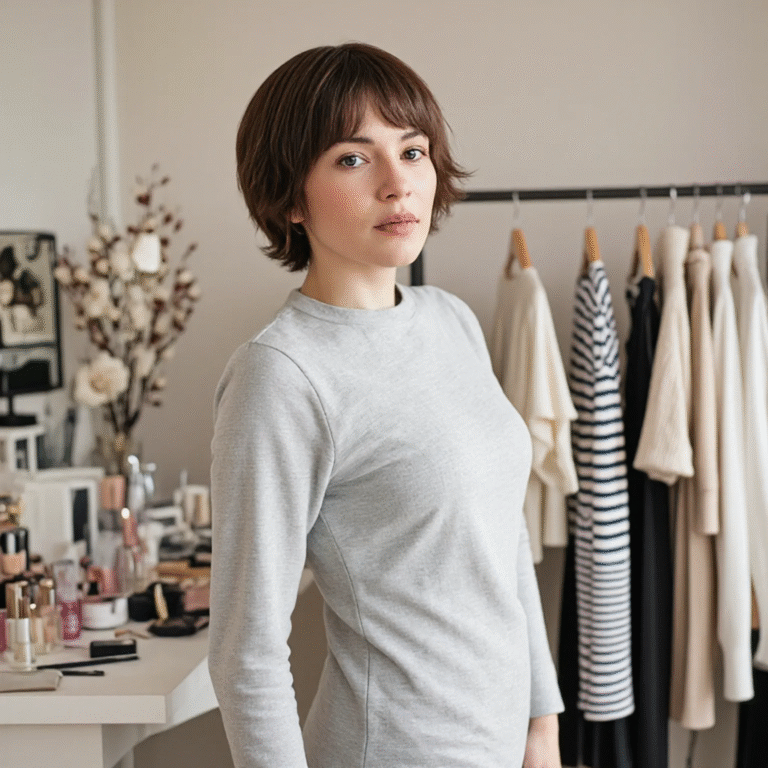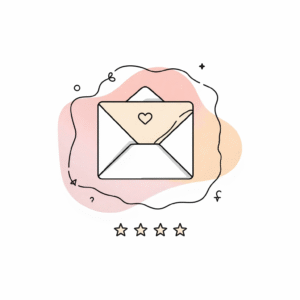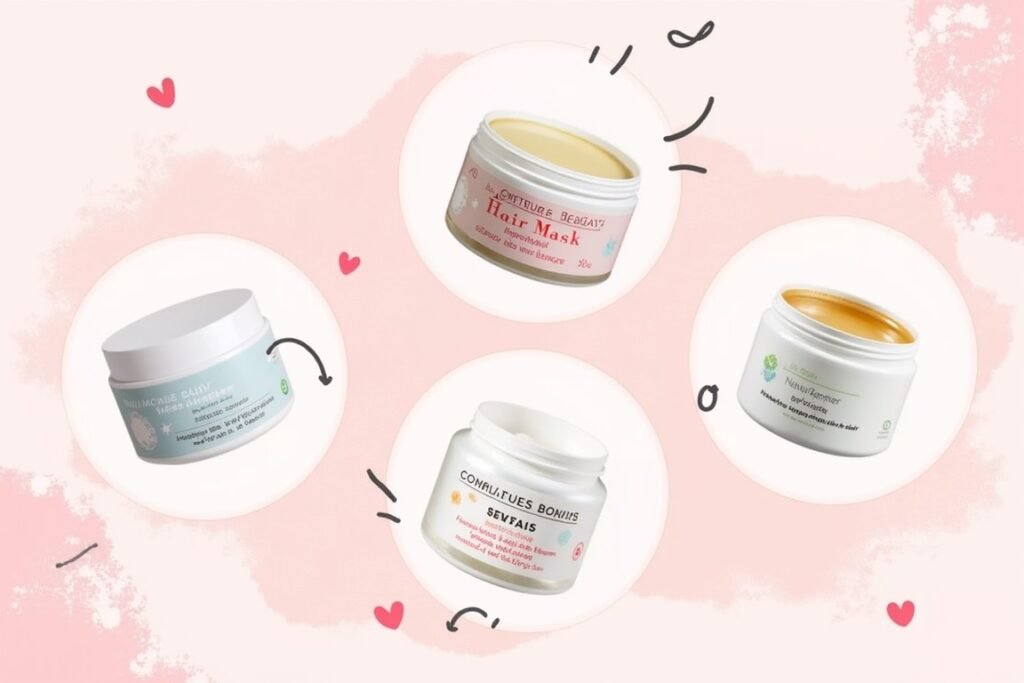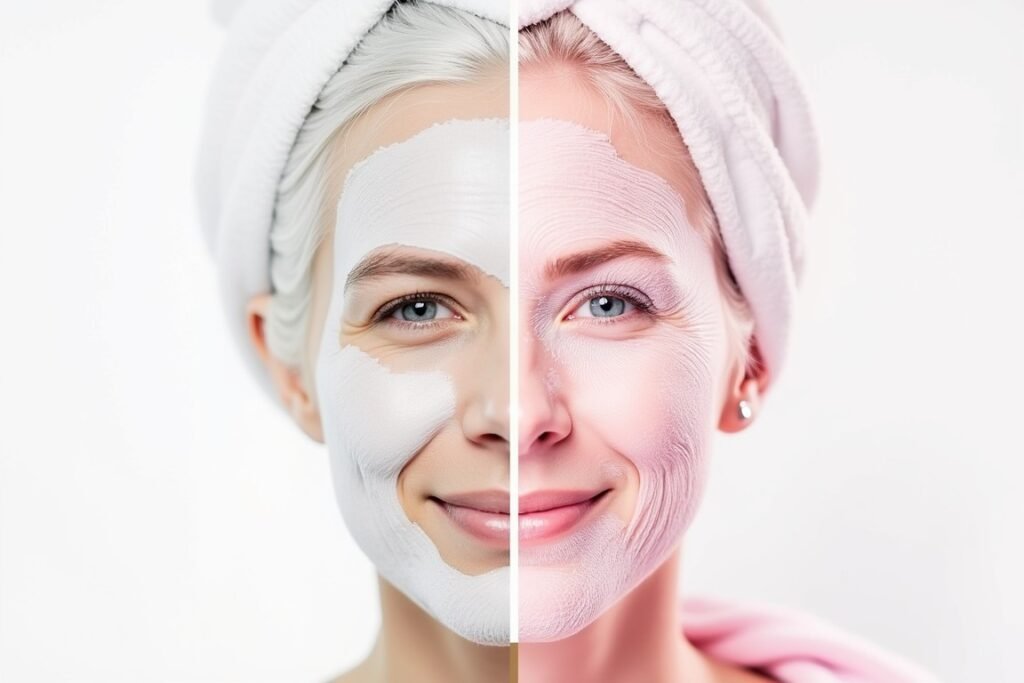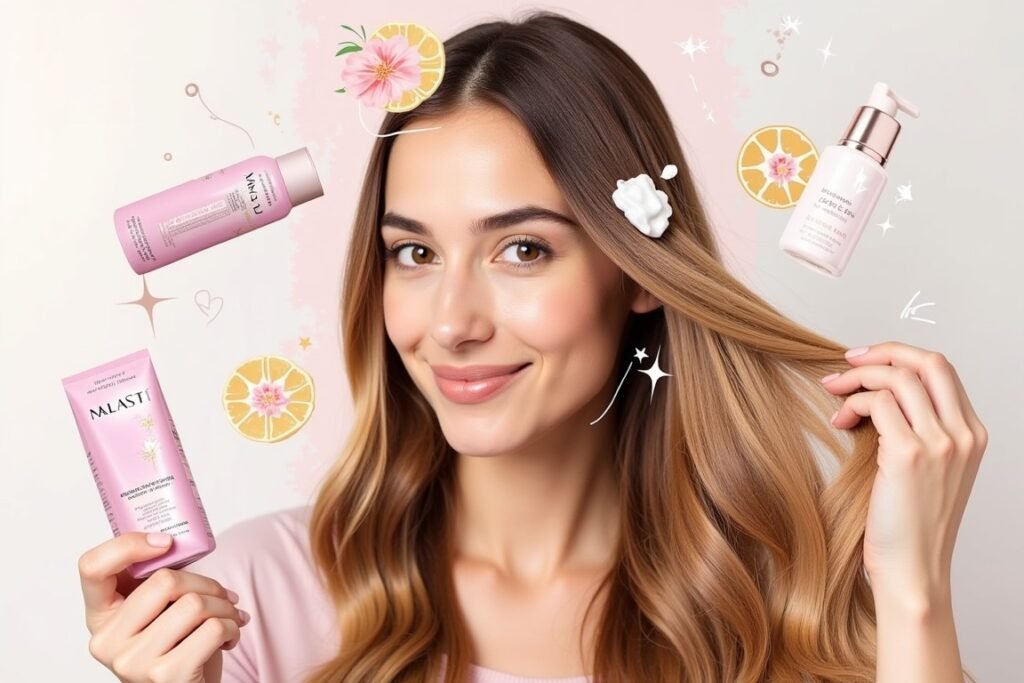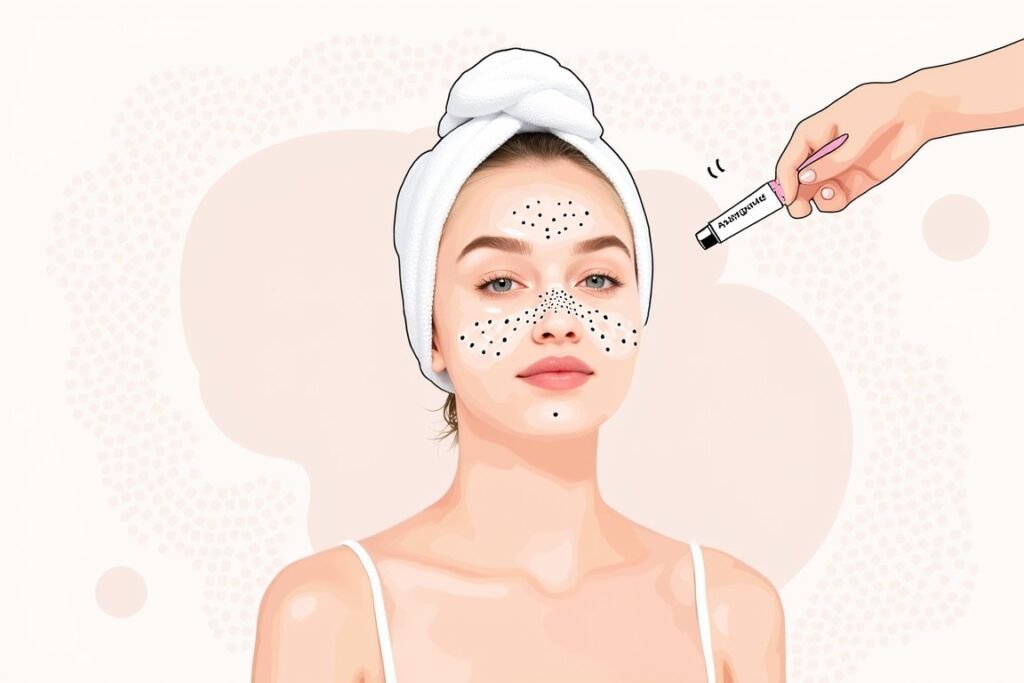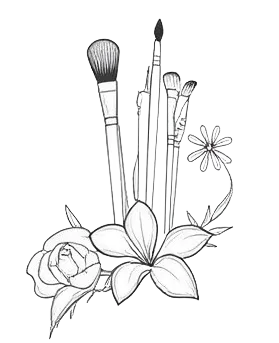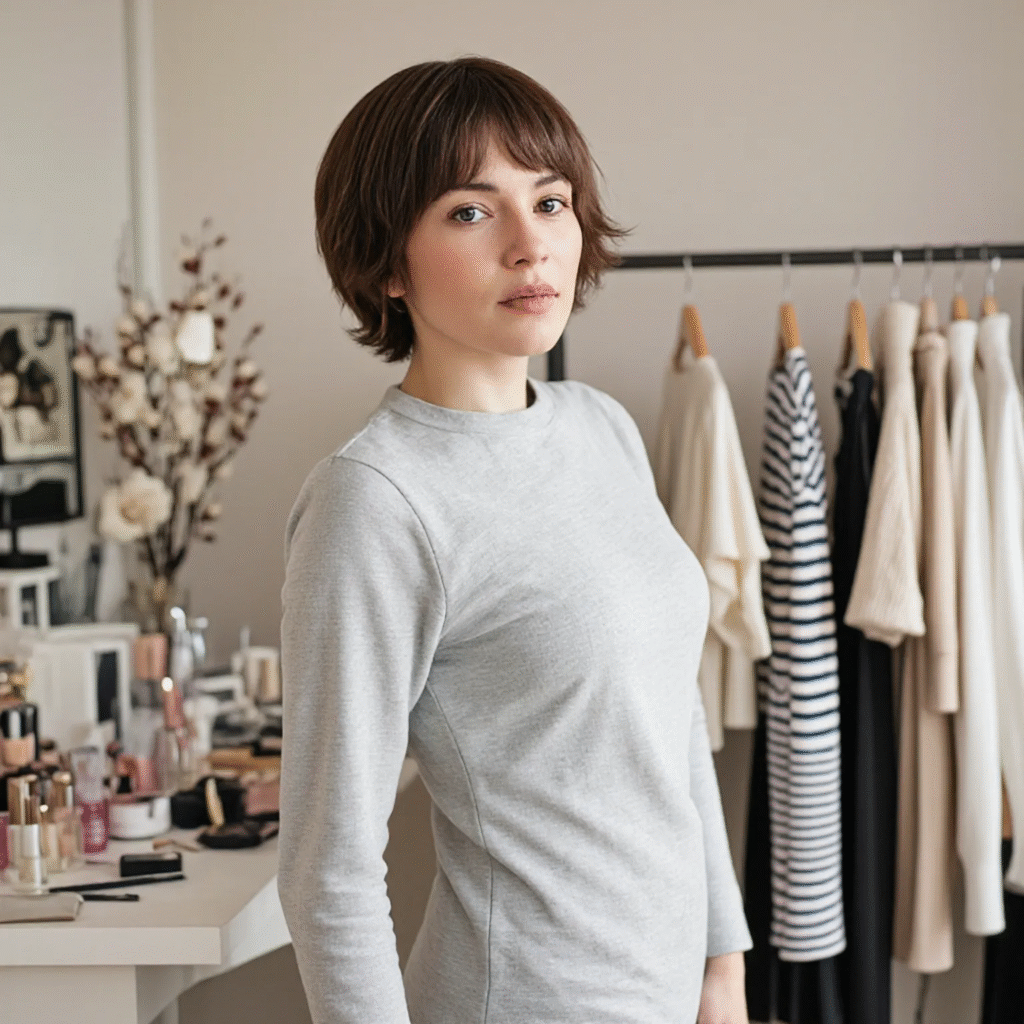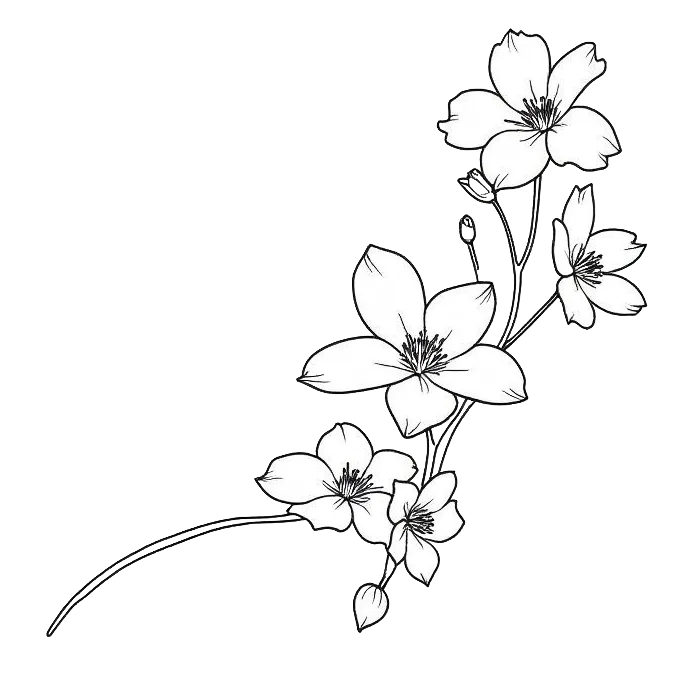A job interview is a moment where every minute counts, and a first impression can determine our professional future. In a world where competition in the job market is constantly growing, the right outfit becomes not only a sign of respect for a potential employer but also a key element of self-presentation.
Did you know that according to research, as much as 55% of a first impression is based on appearance? It’s surprising how much our clothing can influence the way we are perceived. In this article, we’ll explore how to choose the right outfit for a job interview, regardless of gender, season, or company culture.
You’ll learn how to avoid common mistakes and understand the importance of details such as jewelry or fragrance. We’ve also prepared style inspirations that may prove invaluable on this important day. It’s time to discover how fashion can become your ally on the path to a successful career!

Key facts:
- Odpowiedni strój na rozmowę kwalifikacyjną jest kluczowy, ponieważ pierwsze wrażenie tworzy się w ciągu zaledwie kilku sekund.
- Psychologia ubioru podkreśla znaczenie “enclothed cognition”, gdzie ubranie wpływa na nasze samopoczucie i zachowanie.
- Dostosowanie stroju do norm branżowych pokazuje zrozumienie kultury firmy i zdolność adaptacji.
- Wybór stroju wpływa na stan psychiczny, co z kolei może poprawić pewność siebie i komunikację.
- Sezonowe dostosowanie stroju zapewnia komfort i styl, jednocześnie podkreślając profesjonalizm.
Contents
Why is the outfit for a job interview so important?
First impressions during a job interview are crucial, as they can significantly influence the outcome. Research indicates that it takes merely seven seconds for someone to form an impression of you.
This brief moment is often shaped by your appearance, making your outfit a critical component of your presentation. Wearing appropriate attire reflects your professionalism, attention to detail, and respect for the company’s culture. It signals to the employer that you are serious about the position and have taken the time to understand what is expected in their workplace.
Clothing serves as a non-verbal cue that can communicate confidence and competence before you even speak. A well-chosen outfit can enhance your posture and body language, contributing to a more self-assured demeanor.
This psychological boost can make a noticeable difference in how you engage with interviewers, potentially increasing your chances of leaving a lasting positive impression. Studies in psychology have shown that when individuals dress the part, they are more likely to feel and act in accordance with their attire, a phenomenon known as “enclothed cognition.”
The psychology behind dressing appropriately for an interview extends beyond mere appearance. It involves understanding the cultural norms of the industry you are entering. For instance, a corporate job might require more formal attire, such as a tailored suit, to convey authority and reliability.
In contrast, creative fields might allow for a bit more personal expression while still maintaining a level of professionalism. By aligning your outfit with the expectations of the industry, you demonstrate your understanding of the field and your ability to adapt to its standards.
Furthermore, wearing the right attire can positively affect your mental state. When you dress in a way that reflects the role you aspire to, your mindset shifts accordingly.
This psychological alignment can empower you, enhancing your ability to articulate your thoughts clearly and interact confidently with your potential employers. Thus, the importance of your outfit in a job interview cannot be overstated, as it plays a vital role in shaping perceptions, communicating professionalism, and boosting your psychological readiness for the challenges ahead.

General rules – universal clothing tips for everyone
- Choose a well-fitted outfit
- Maintain neatness and cleanliness
- Opt for simplicity over extravagance
- Ensure your clothing is appropriate for the industry
- Pay attention to details
Choosing a well-fitted outfit is crucial for both men and women. Ill-fitting clothes can detract from your overall appearance, potentially giving off an impression of carelessness.
Tailored clothing not only enhances your silhouette but also boosts your confidence, enabling you to present yourself with poise. Comfort is another aspect to consider; when your attire fits well, you are less likely to be distracted by adjusting your clothes, allowing you to focus entirely on the interview.
Neatness and cleanliness are fundamental. This includes wearing freshly laundered clothes, ensuring they are free from wrinkles, and checking for any stains or tears.
Attention to these details reflects your respect for the interview process and the individuals conducting it. Moreover, polished shoes and well-groomed hair contribute significantly to a polished look. Neat attire communicates to the interviewer that you are organized and meticulous—qualities that are valuable in any professional setting.
Opting for simplicity over extravagance in your outfit choice is advisable. Simple, classic styles are less likely to distract or offend and allow your personality and skills to take center stage.
Overly flamboyant clothing or accessories might draw attention away from what truly matters—your qualifications and ability to perform the job. A clean, uncomplicated outfit demonstrates your understanding of professional decorum and your ability to adapt to various situations with grace.
How to dress for a job interview as a woman
When preparing for a job interview, selecting attire that balances personal style with professional appearance is essential. For women, a well-fitted blazer paired with tailored trousers or a pencil skirt in neutral colors like black, navy, or gray can create a polished and sophisticated look.
Consider wearing a blouse made from quality fabrics such as silk or cotton, as these materials project a sense of refinement and are comfortable to wear. Avoid overly tight or loose clothing; instead, opt for pieces that complement your body shape while ensuring ease of movement.
Expressing personal style within professional boundaries can be achieved by incorporating subtle elements like a statement necklace or a scarf. These accessories can add a touch of individuality without overwhelming your ensemble. It’s crucial to strike a balance; while it’s important to feel like yourself, the primary focus should remain on your skills and professionalism.
Heels or flats should be polished and in good condition, providing both style and practicality. Choose shoes that you can walk in comfortably for an extended period, as this will boost your confidence and ease during the interview.
Here is a list of do’s and don’ts to guide your interview attire:
- Do: Choose clothing that is clean, pressed, and free of any visible flaws.
- Do: Opt for classic cuts and neutral colors as a base for your outfit.
- Do: Add a touch of personal style with minimal accessories.
- Don’t: Wear overly revealing or casual clothing.
- Don’t: Overdo with bold patterns or flashy colors that can distract from your qualifications.
- Don’t: Neglect the condition of your shoes and other accessories.
How to dress for a job interview as a man
Dressing for a job interview as a man requires a blend of professionalism and subtle personal flair. A classic suit in shades like charcoal, navy, or black serves as a solid foundation for your interview attire. Pair it with a crisp, well-fitted dress shirt in white or light blue to maintain a clean and sophisticated appearance.
Ties should be chosen with care, favoring solid colors or understated patterns that complement your suit without overpowering your look. Ensure your belt and shoes match in color, typically black or brown, and are polished to perfection.
Grooming plays a pivotal role in presenting a polished image. A well-groomed hairstyle and a clean shave or neatly trimmed beard can enhance your overall appearance, conveying attention to detail and professionalism.
Fit is equally crucial; ill-fitting clothes can detract from your confidence and appearance. Invest in tailoring to ensure your suit fits perfectly, allowing for comfort and ease of movement. Remember, the right fit can significantly elevate your look, projecting competence and confidence to potential employers.
Key wardrobe pieces to consider include:
- Suit: Opt for a classic, tailored suit in neutral colors.
- Dress shirt: Choose a high-quality, fitted shirt in a subtle hue.
- Tie: Select a tie with simple patterns or solid colors.
- Shoes: Wear polished leather shoes in black or brown.
- Accessories: A matching belt and a classic watch can add a touch of sophistication.
By adhering to these guidelines, you can ensure your attire reflects both your professionalism and personal style, making a strong impression during your job interview.

Interview outfit and the season
Adapting your interview outfit according to the season is crucial for both comfort and style. In warmer months, lightweight fabrics like cotton, linen, and breathable blends are ideal choices. These materials help regulate body temperature while maintaining a professional appearance.
Opt for short-sleeved or sleeveless blouses and shirts for women, and consider unlined or partially lined suits to ensure you remain cool. For men, a well-fitted, lightweight suit paired with a breathable dress shirt can keep you looking sharp without overheating. It’s also wise to choose lighter colors, such as light gray or beige, which reflect sunlight and help you stay fresh.
As the temperature drops, layering becomes an essential strategy for staying warm without sacrificing professionalism. Wool and cashmere are excellent materials for suits and sweaters during the colder months.
Women can add a tailored wool coat over their outfit, while men might consider a cashmere scarf or a classic overcoat to protect against the chill. Layering not only provides warmth but also adds depth to your outfit, allowing for easy adjustments in varying indoor temperatures. Ensure that each layer fits well to avoid a bulky appearance and maintain a polished look.
- Spring: Choose lightweight layers and pastel colors to reflect the season.
- Summer: Opt for breathable fabrics and lighter shades to stay cool.
- Autumn: Incorporate warmer tones and layering pieces like cardigans.
- Winter: Use wool and cashmere for warmth, with a focus on dark, rich colors.
Match your outfit to the type of company
Understanding the company culture and industry norms is essential when selecting your interview attire. A corporate environment typically requires a more formal dress code. For women, a tailored suit or a conservative dress paired with closed-toe heels is appropriate. Men should consider a dark-colored suit with a crisp dress shirt and tie. These choices reflect professionalism and attention to detail, which are highly valued in such settings.
In contrast, creative industries often allow for more personal expression in outfit choices. Women might opt for a fashionable blouse with tailored trousers or a statement dress, while men could choose a stylish blazer paired with chinos or dark jeans. The key is to balance creativity with professionalism, ensuring your appearance aligns with the company’s values.
Casual environments, such as tech startups or relaxed office settings, offer more flexibility in attire. In these settings, women could wear smart casual dresses or a blouse with a pencil skirt, while men might consider a neat polo shirt with khakis.
However, even in casual settings, it’s important to avoid overly casual items like flip-flops or distressed jeans. Regardless of the industry, your outfit should convey respect for the opportunity and the organization. Showing that you’ve made an effort to understand the company culture can leave a positive impression on interviewers.
To tailor your outfit effectively, research plays a crucial role. Start by reviewing the company’s website and social media profiles to gain insights into their dress code. Look for team photos or events that showcase employee attire.
Reach out to current or former employees for firsthand information about what to expect. Additionally, consider the company’s industry standards and location, as these can influence acceptable dress codes. Gathering this information will help you make informed decisions and present yourself confidently in any interview setting.
- Visit the company website and social media pages for visual cues.
- Contact current or former employees for insights.
- Consider the industry norms and geographical location.
- Check for any specific dress code guidelines provided by the company.
Common outfit mistakes
When dressing for a job interview, one of the most frequent mistakes people make is wearing outfits that are not appropriate for the specific company culture. This can range from being overly casual to excessively formal.
For instance, showing up in a t-shirt and jeans at a corporate office can project a lack of professionalism, while wearing a three-piece suit to a tech startup might signal that you don’t understand the relaxed culture. It’s crucial to strike the right balance to ensure your attire aligns with the company’s atmosphere.
Another common pitfall is neglecting the importance of clothing fit and condition. Ill-fitting clothes can distract from your overall appearance and may give the impression of a lack of attention to detail.
Ensuring that your clothes are well-tailored and free from wrinkles, stains, or missing buttons is essential. This attention to detail not only enhances your appearance but also reflects your organizational skills and meticulousness, qualities highly valued in any professional setting.
Lastly, choosing the wrong colors can be a subtle yet significant mistake. Bright, flashy colors or overly busy patterns can be distracting and may detract from the professional image you’re aiming to present.
Instead, opt for neutral or muted tones that convey professionalism and calmness. Additionally, consider the psychological impact of colors; for example, blue is often associated with trustworthiness, while gray can signal sophistication. Understanding the subtleties of color psychology can help you make more informed choices about your interview attire.
- Avoid outfits that don’t match the company’s dress code.
- Ensure clothing fits well and is in pristine condition.
- Steer clear of loud colors and busy patterns.
- Pay attention to detail, such as ironing clothes and fixing minor damages.
- Refrain from wearing overly trendy or flashy accessories.

Pay attention to accessories – fragrance and jewelry
Accessories play a pivotal role in completing an interview outfit, acting as the subtle finishing touches that can elevate your overall appearance. However, the key is moderation and appropriateness. When it comes to jewelry, less is often more.
For women, a pair of stud earrings or a simple necklace can add elegance without overwhelming the look. Men might consider a classic watch or cufflinks if appropriate for the occasion. The focus should always remain on maintaining a polished and professional image, ensuring that accessories complement rather than overshadow your attire.
Fragrance, on the other hand, is a more nuanced accessory. While a pleasant scent can leave a positive impression, it’s essential to select a fragrance that is subtle and not overpowering. Opt for light, fresh scents that won’t dominate the room or distract the interviewer.
Remember that some individuals may have sensitivities or allergies, so moderation is crucial. A restrained approach ensures that your presence is felt without being intrusive, allowing your skills and qualifications to take center stage.
Do choose minimalistic and understated jewelry that enhances your outfit.
- Do opt for light, non-intrusive fragrances.
- Don’t wear oversized or overly flashy jewelry that distracts.
- Don’t apply too much perfume or cologne, as strong scents can be off-putting.
- Do ensure your accessories are in good condition and match your overall look.
Outfit examples – inspiration
When dressing for a job interview, selecting the right outfit can significantly impact your confidence and the impression you leave. For women, a classic choice might be a tailored blazer paired with a pencil skirt or tailored trousers. This ensemble is versatile and can be adapted for various industries by altering the color or fabric.
For instance, a navy blazer with a beige skirt suits corporate environments, while a tweed blazer might be more fitting for creative roles. A silk blouse underneath adds a touch of sophistication without being overly formal. Opting for a closed-toe pump in a neutral color completes the look.
Men can consider a well-fitted suit in a neutral color like charcoal or navy. A white or light blue dress shirt underneath provides a clean and professional base. Depending on the industry, a tie can be added for a more formal setting, or omitted for a slightly relaxed yet polished appearance.
Brown or black leather shoes, paired with a matching belt, are essential components that anchor the outfit. For creative fields, integrating a patterned shirt or a subtly colored tie can inject personality while maintaining professionalism.
Key pieces for both men and women include:
- Tailored blazer: Adds structure and can be dressed up or down.
- Neutral bottoms: Versatile skirts or trousers in beige, black, or grey.
- Classic shoes: Choose pumps or leather shoes in muted tones.
- Dress shirt or blouse: A crisp, clean top that flatters the outfit.
- Accessories: Minimalistic jewelry and a professional bag or briefcase.
These outfit examples not only provide a foundation for dressing appropriately for an interview but also allow for personal flair through subtle modifications that reflect the industry and your individual style.

What colors to wear to a job interview?
Understanding the psychology of color can play a crucial role in dressing for a job interview. Colors can subtly communicate various traits and emotions, impacting how you are perceived. For instance, navy blue is often associated with trust, confidence, and stability, making it a popular choice for corporate settings. Wearing navy blue can convey reliability and professionalism, attributes that are highly valued by employers.
Similarly, black is synonymous with sophistication and authority. When used sparingly, it can project a strong, assertive presence without being overwhelming. On the other hand, grey is a balanced color that suggests sophistication and neutrality, which can be beneficial in settings where you wish to appear calm and composed.
In contrast, more vibrant colors like red can express energy and passion, but should be used cautiously, typically as accents, to avoid coming off as aggressive.
White is another excellent choice for a base color, representing simplicity and cleanliness. It pairs well with other shades to create a fresh and professional appearance. To ensure your outfit aligns with the desired impression, consider the industry and the role you are applying for, as certain fields may welcome a splash of creativity through color more than others.
Below is a list of recommended colors to consider for your interview attire:
- Navy Blue: Trust and confidence
- Black: Sophistication and authority
- Grey: Neutrality and professionalism
- White: Cleanliness and simplicity
- Red (as an accent): Energy and passion

